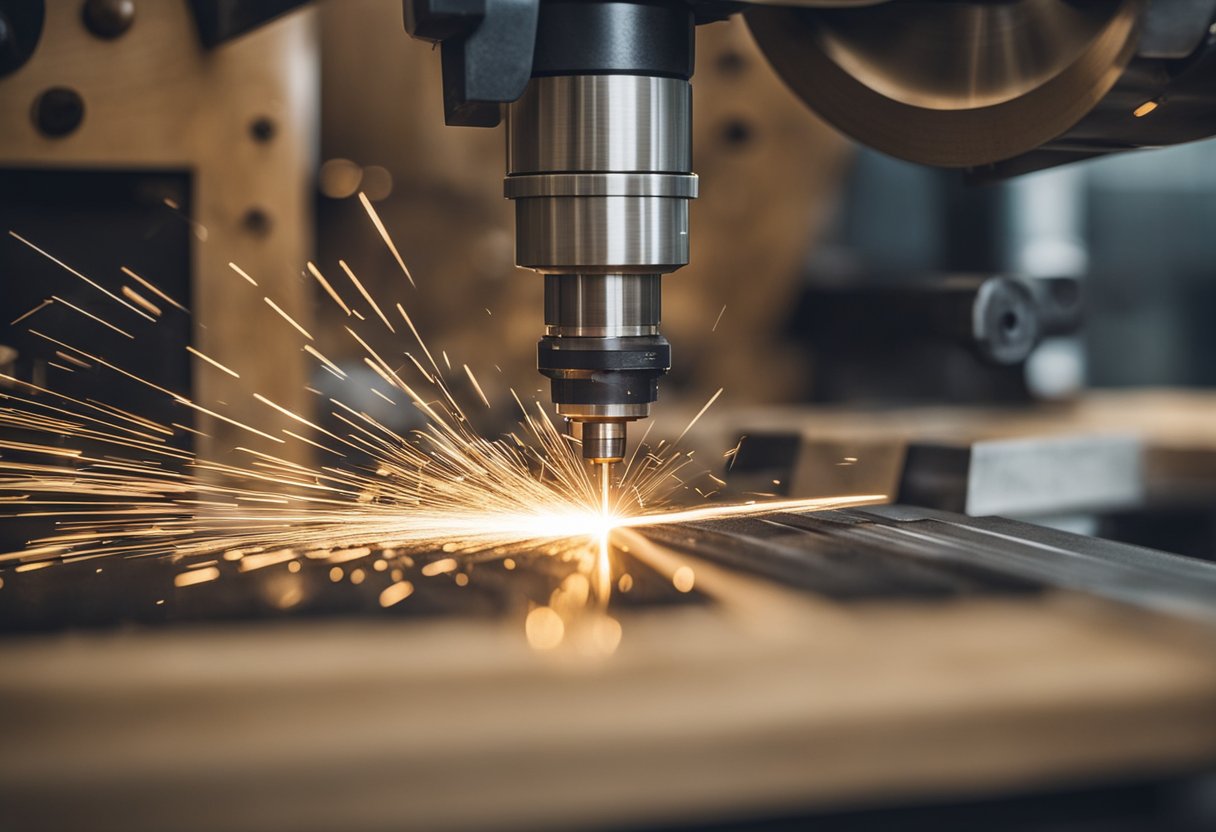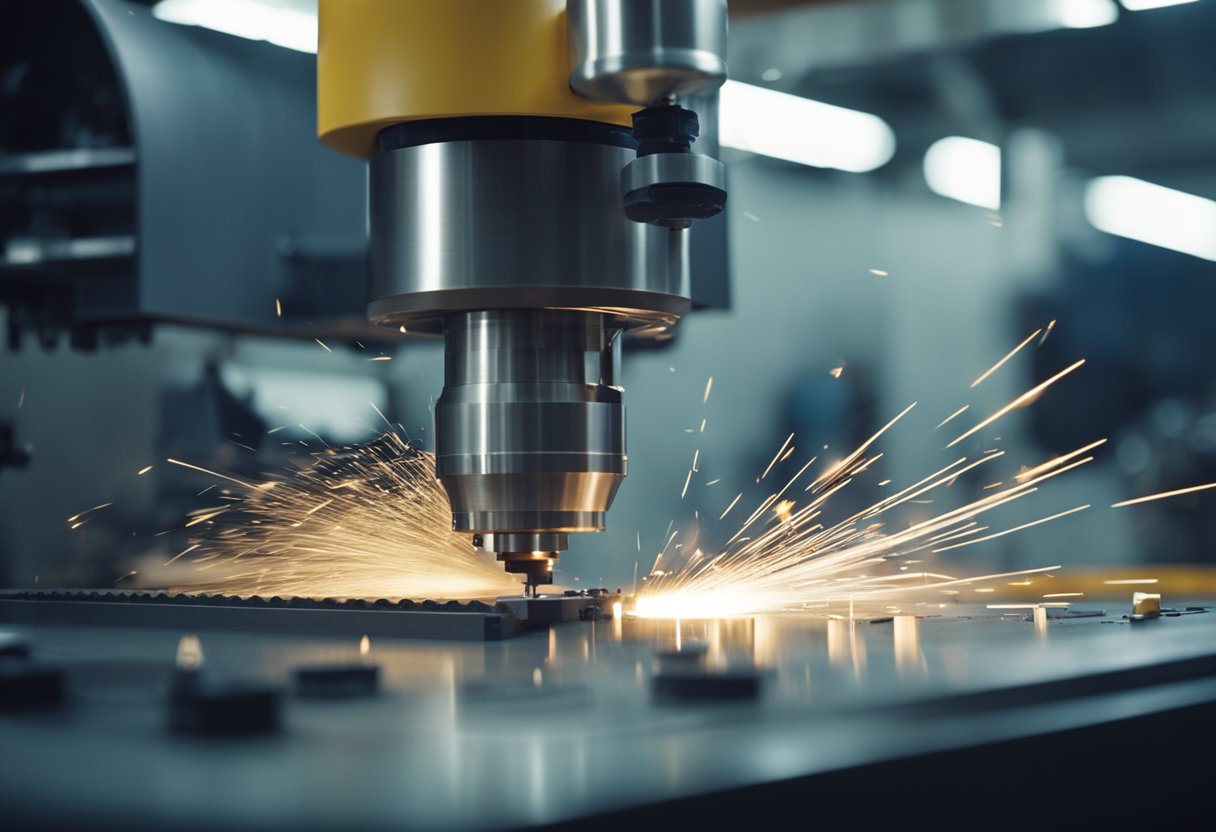CNC Lathe Oakland: High-Quality Precision Machining Services
CNC lathes have revolutionized the manufacturing industry by providing precision and accuracy in the production of complex parts. Oakland, California has seen a rise in the use of CNC lathe machines in recent years, with many manufacturing companies adopting this technology to improve their production capabilities. CNC lathe Oakland is a popular search term among businesses looking to invest in this technology.

CNC lathe machines use computer-controlled technology to automate the cutting process, resulting in higher accuracy and precision. This technology is particularly useful in the production of complex parts that require intricate shapes and designs. Oakland's manufacturing industry has seen a significant increase in the use of CNC lathe machines due to the benefits they offer in terms of speed, accuracy, and efficiency.
Precision is a crucial aspect of manufacturing, and CNC lathe machines offer unparalleled precision in the production of parts. The use of CNC lathe technology has also reduced the need for manual labor, resulting in faster production times and lower costs for manufacturing companies. Overall, CNC lathe Oakland has become a popular choice for businesses looking to improve their production capabilities and stay ahead of the competition.
Understanding CNC Lathes in Oakland

CNC lathes are an essential part of modern manufacturing processes. These machines are widely used in Oakland and other manufacturing centers around the world to produce high-quality parts and components for a variety of industries. In this section, we will explore the role of CNC lathes in manufacturing and highlight some of their key features.
The Role of CNC Lathes in Manufacturing
CNC lathes are computer-controlled machines that are used to shape and cut metal parts. They are an essential part of the manufacturing process and are used to produce a wide range of products, from automotive parts to medical devices. CNC lathes are used to create precise parts that meet the exact specifications of the customer. They are also used to create parts with complex shapes and geometries that would be difficult or impossible to create by hand.
In Oakland, CNC lathes are used in a variety of industries, including aerospace, automotive, and medical manufacturing. These machines are operated by highly skilled CNC lathe machinists who work closely with CNC programmers to ensure that parts are produced to the highest standards of quality and precision.
Key Features of CNC Lathes
CNC lathes come in a variety of configurations and sizes, but they all share some common features. One of the most important features of a CNC lathe is its y-axis, which allows the machine to move the cutting tool in two directions. This allows the machine to create parts with complex geometries and shapes.
Another important feature of a CNC lathe is its turret. The turret holds the cutting tools and can be rotated to bring the appropriate tool into position. This allows the machine to switch between tools quickly and efficiently, which is essential for producing complex parts.
In addition to these features, CNC lathes also have a range of other capabilities, such as live tooling and automatic tool changers. These features allow the machine to perform a variety of operations, such as drilling, tapping, and milling, in addition to turning.
In conclusion, CNC lathes play a critical role in manufacturing in Oakland and around the world. These machines are used to produce high-quality parts and components for a variety of industries, and they are operated by highly skilled CNC lathe machinists and programmers. Understanding the key features of CNC lathes is essential for anyone who wants to work in manufacturing or who needs to have parts produced to exacting standards of quality and precision.
Operating CNC Lathes Safely and Efficiently

Essential PPE for CNC Machinists
Personal Protective Equipment (PPE) is essential for any machinist operating a CNC lathe. This equipment is designed to protect the operator from any hazards that may arise during the machining process. The following is a list of essential PPE for CNC machinists:
- Safety glasses or goggles to protect the eyes from flying debris
- Earplugs or earmuffs to protect the ears from loud noises
- Steel-toed shoes or boots to protect the feet from heavy objects
- Gloves to protect the hands from sharp edges and hot surfaces
Best Practices for Operating CNC Lathes
Operating a CNC lathe requires skill and precision. Here are some best practices to follow to ensure safe and efficient operation:
- Always read and follow the manufacturer's instructions for the lathe.
- Check the lathe's speed and feeds before starting the machining operation.
- Use the correct tooling and fixtures for the job.
- Avoid overloading the lathe with too much material.
- Regularly inspect the lathe for any signs of wear or damage.
- Always keep the work area clean and organized.
Maintaining Precision and Accuracy
Maintaining precision and accuracy is crucial when operating a CNC lathe. Here are some tips to help maintain precision and accuracy:
- Use measuring instruments to ensure the accuracy of the machined parts.
- Regularly check the lathe for any errors or calibration issues.
- Use cutting tools that are sharp and in good condition.
- Avoid excessive tool wear by using the correct cutting speeds and feeds.
- Regularly clean and maintain the lathe to ensure it is operating at peak performance.
By following these best practices, machinists can ensure safe and efficient operation of CNC lathes while maintaining precision and accuracy in their machining operations.
Materials and Components in CNC Lathe Production

Working with Exotic Materials
CNC lathe production involves working with a wide range of materials, including exotic ones such as titanium, Inconel, and Hastelloy. These materials are known for their high strength, corrosion resistance, and ability to withstand extreme temperatures, making them ideal for use in aerospace, defense, and medical industries.
Working with exotic materials requires specialized equipment and expertise. CNC lathes designed for machining these materials are equipped with high-pressure coolant systems, specialized cutting tools, and advanced software for precise control and monitoring. Machinists who work with exotic materials must have a thorough understanding of their properties and characteristics to ensure that they are machined correctly and to the required specifications.
Understanding Component Specifications
CNC lathe production involves the use of various components, including bearings, gears, and shafts. These components must meet specific specifications to ensure that they function correctly and that the finished product meets the required standards.
Component specifications include dimensions, tolerances, surface finish, and material properties. Machinists must be able to interpret these specifications and use them to guide the machining process. They must also have a thorough understanding of the properties and behavior of different materials to ensure that the components are machined correctly.
In addition to meeting the required specifications, components must also be designed for ease of assembly and maintenance. Machinists must consider factors such as accessibility, clearance, and alignment when designing and machining components to ensure that they can be assembled and maintained easily.
Overall, CNC lathe production involves working with a wide range of materials and components, each with its own unique properties and specifications. Machinists who specialize in this field must have a thorough understanding of these materials and components and be able to use this knowledge to produce high-quality, precision parts.
Advancements and Career Opportunities in CNC Machining
Innovations in CNC Lathe Technology
CNC lathe technology has come a long way in recent years, with advancements in automation, precision, and speed. Haas and Vision are two companies leading the way in the development of these technologies, offering state-of-the-art machines that are reliable and easy to use.
One of the most significant advancements in CNC lathe technology is the ability to program machines using computer software. This allows machinists to create complex parts with a high degree of accuracy and consistency. Reliable machines are essential for this process, as even small errors can result in significant problems down the line.
Career Path for CNC Lathe Machinists
CNC lathe machinists are in high demand, with many companies seeking skilled workers who can operate and maintain these sophisticated machines. To become a CNC lathe machinist, one must have a strong foundation in math and science, as well as good communication skills, both verbal and written.
Journeyman machinists typically start as apprentices, learning the trade and developing their skills under the guidance of experienced professionals. As they gain experience, they may take on more advanced roles, such as programming or engineering. Fabricators and engineers also play a vital role in the CNC machining process, working closely with machinists to ensure that parts are produced to the highest standards.
To succeed in the field of CNC lathe machining, it is important to be able to read and understand blueprints, as well as to communicate effectively with colleagues and supervisors. This includes both verbal and written communication, as many companies rely on email and other digital communication tools to stay in touch.
Frequently Asked Questions
What factors should be considered when choosing a CNC lathe for a woodworking project?
When choosing a CNC lathe for a woodworking project, several factors need to be considered. These include the size of the project, the type of wood being used, the level of precision required, and the budget available. It is important to choose a CNC lathe that can handle the size and weight of the wood being used and has the necessary cutting tools to achieve the desired results.
How do the capabilities of a CNC lathe compare to traditional lathes?
CNC lathes are capable of producing more complex shapes and designs than traditional lathes. They offer greater precision and accuracy, making them ideal for intricate woodworking projects. CNC lathes also allow for faster production times and can be programmed to produce multiple identical pieces.
What are the maintenance requirements for a CNC lathe used in professional woodworking?
CNC lathes require regular maintenance to ensure they operate at peak performance. This includes cleaning and lubricating the machine, inspecting and replacing worn parts, and monitoring the machine's performance. It is also important to follow the manufacturer's recommended maintenance schedule and to keep the machine in a clean and dry environment.
Can you recommend any CNC lathe models particularly well-suited for small businesses in Oakland?
There are several CNC lathe models that are well-suited for small businesses in Oakland. These include the Haas ST-10Y, the Okuma LB3000EX-II, and the Mazak Quick Turn Smart 200. Each of these models offers a range of features and capabilities to meet the needs of small businesses.
What safety features are important to look for in a CNC lathe for a workshop environment?
Safety features are essential when operating a CNC lathe in a workshop environment. These include emergency stop buttons, safety interlocks, and protective barriers. It is also important to ensure that operators are properly trained in the safe operation of the machine and that all safety procedures are followed.
How does the cost of operating a CNC lathe over time compare to its initial purchase price?
The cost of operating a CNC lathe over time depends on a variety of factors, including the frequency of use, the cost of maintenance and repairs, and the cost of energy. While the initial purchase price of a CNC lathe may be high, the long-term cost of operation can be significantly lower than that of a traditional lathe due to increased efficiency and reduced labor costs.
